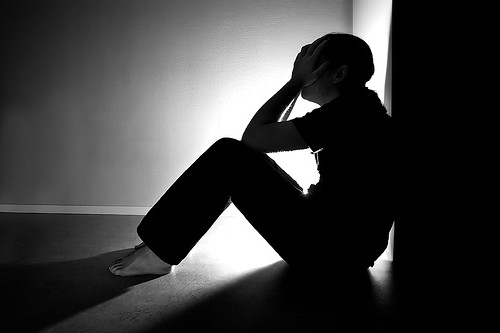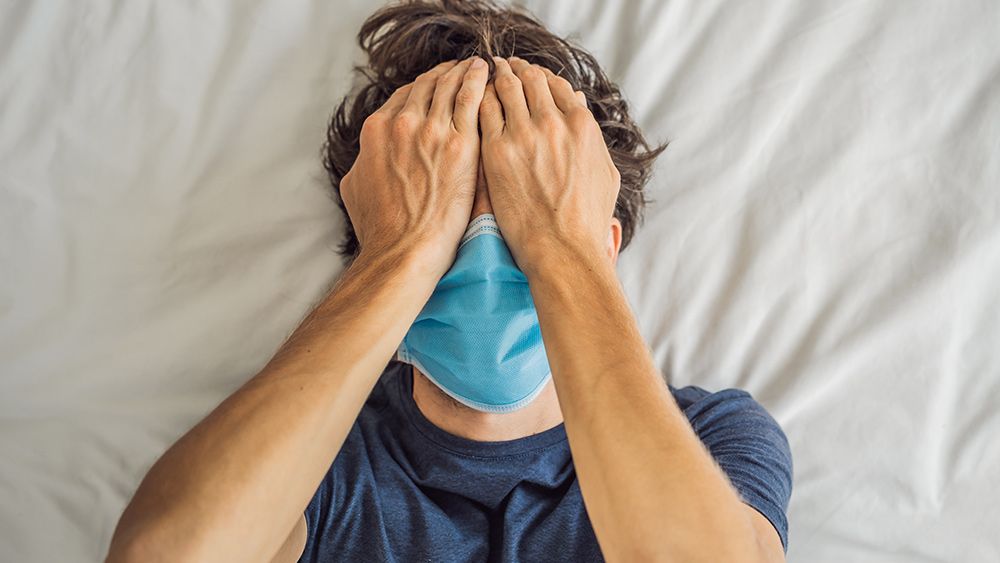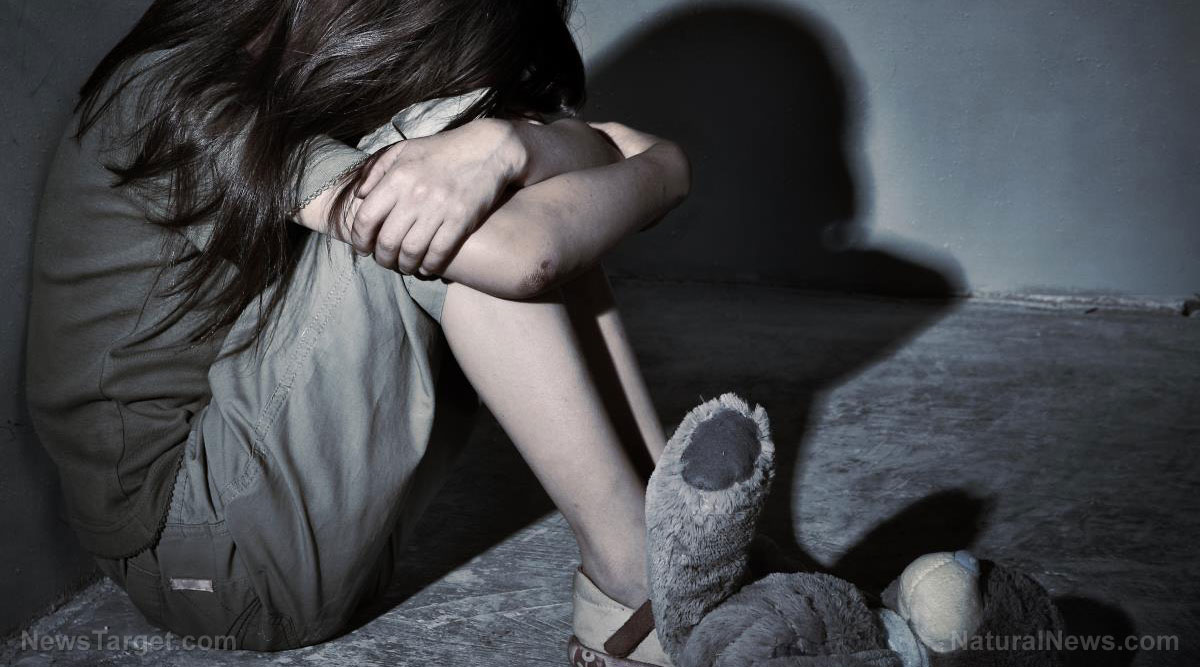Man diagnosed with cancer during pandemic lockdown hangs self at his garage
03/22/2021 / By Nolan Barton

The combination of isolation and cancer diagnosis proved too much for Ray Herridge, 61, of Epsom, Surrey in England. Herrig hung himself at his garage after leaving a handwritten note to his wife Jay, apologizing for taking his own life. Jay found her husband’s body on Feb. 2.
“Ray was diagnosed with low-level prostate cancer late last year and he took the news badly,” Jay said in a statement read at Woking Coroner’s Court. “This, coupled with the isolation from work due to the COVID situation, had an effect on his well-being.”
The now widowed wife related that she had accompanied Ray to consultations and that there was a clear treatment plan and the prognosis was good.
“However, he was struggling to cope and he was unwilling to seek support from professionals,” She said.
Assistant Surrey Coroner Dr. Karen Henderson heard that Ray told his wife he was going to do some work in their garage nearby but that Jay found the garage open when she went to give him a drink. She said it was clear that her husband was working as his personal items were present.
She noticed Ray on the roof of the garage and thought he was just sitting up there. But she immediately called a neighbor for help once she realized what had actually happened.
Paramedics and police arrived at the couple’s home and Ray was pronounced dead at 12.19 p.m. on Feb. 2. A post-mortem examination showed that his death was due to hanging.
Dr. Henderson said that she accepted the death was caused by hanging and added: “It is clear that he was deeply distressed by the coronavirus situation and his diagnosis.”
She said that it was the combination of both that led Ray to end his own life and concluded that his death was suicide.
Suicide rates on the rise in England before the pandemic
Suicide rates among men in England and Wales in 2019 – the year before the coronavirus pandemic started – were the highest since 2000. Meaning, mental health issues are already of great concern there even before the pandemic hit.
But suicide is preventable and actions should be taken to protect people’s mental health.
Confronting known risk factors that are likely to be exacerbated by the pandemic is crucial to keep an individual from having suicidal thoughts.
Those risk factors include depression, post-traumatic stress disorder, hopelessness, feelings of entrapment and burdensomeness, substance misuse, loneliness, domestic violence, child neglect or abuse, unemployment and other financial insecurity.
The effect of economic damage from the pandemic should also be monitored. One study reported that after the 2008 economic crisis, rates of suicide increased in two-thirds of the 54 countries studied – particularly among men and in countries with higher job losses. (Related: Coronavirus pandemic creating “perfect storm” for huge global mental health crisis.)
Appropriate safety nets must be put in place or enhanced for people facing financial hardships.
The media can also help by promoting the importance of mental health support, signposting sources of help, reporting stories of hope and recovery and avoiding alarmist and speculative headlines that may heighten risk of suicide.
The impact on suicide will vary over time and differ according to national gross domestic product and individual characteristics such as socioeconomic position, ethnicity and mental health.
Appropriate services must be made available for people in crisis and those with new or existing mental health problems.
Pandemic-related suicides among school children on the rise in the US
In the United States, suicide cases have been on the rise among students during the pandemic.
Anthony Orr, an honor student, took his own life in August last year. He was one of 19 students who died by suicide in his school district in Las Vegas, Nevada since the shutdown in March last year. Thirteen of those deaths occurred after July 2020.
“There’s a sense of urgency,” said Jesus Jara, the superintendent of the Clark County School District. “You know, we have a problem.”
Suicide is complex, involving layers of risk factors, including biological and environmental ones. It’s hard to know the exact factors involved in the deaths of the 19 students.
But the sudden rise in deaths has school district officials worried that the coronavirus pandemic may have played a role. Educators and mental health care providers in other parts of the U.S. have the same concern.
In recent months, many suicidal children showed up in hospital emergency departments and more kids needed in-patient care after serious suicide attempts. (Related: An invisible danger: Coronavirus pandemic a threat to the mental health of Americans.)
“Across the country, we’re hearing that there are increased numbers of serious suicidal attempts and suicidal deaths,” said Dr. Susan Duffy, a professor of pediatrics and emergency medicine at Brown University.
According to the Centers for Disease Control and Prevention (CDC), between April and October 2020, hospital emergency departments saw a rise in the share of total visits that were from kids for mental health needs.
The number of kids with suicide attempts coming to the emergency room at UCSF Benioff Children’s Hospital Oakland in California in the fall of 2020 was double the number in the fall of 2019, said Marisol Cruz Romero, a psychologist and the coordinator for the hospital’s behavioral emergency response team.
At Riley Hospital for Children in Indianapolis, the number of children and teens hospitalized after suicide attempts went up from 67 in 2019 to 108 in 2020.
Psychiatrists and other doctors who work with children said the pandemic has created a perfect storm of stressors for kids, increasing the risk of suicide for many. It has exacerbated an ongoing children’s mental health crisis – suicide rates had already been going up for almost a decade among children and youth.
They said that the problems brought on by the pandemic only highlighted the weaknesses in the mental health safety net for children.
Follow Pandemic.news for more news and information related to the coronavirus pandemic.
Sources include:
Tagged Under: Centers for Disease Control and Prevention, Coronavirus pandemic, domestic violence, lockdowns, mental health, pandemic, post traumatic stress disorder, Prostate cancer, Riley Hospital for Children, suicidal thoughts, suicide
RECENT NEWS & ARTICLES
COPYRIGHT © 2017 BEATDEPRESSION.NEWS
All content posted on this site is protected under Free Speech. BeatDepression.news is not responsible for content written by contributing authors. The information on this site is provided for educational and entertainment purposes only. It is not intended as a substitute for professional advice of any kind. BeatDepression.news assumes no responsibility for the use or misuse of this material. All trademarks, registered trademarks and service marks mentioned on this site are the property of their respective owners.




















